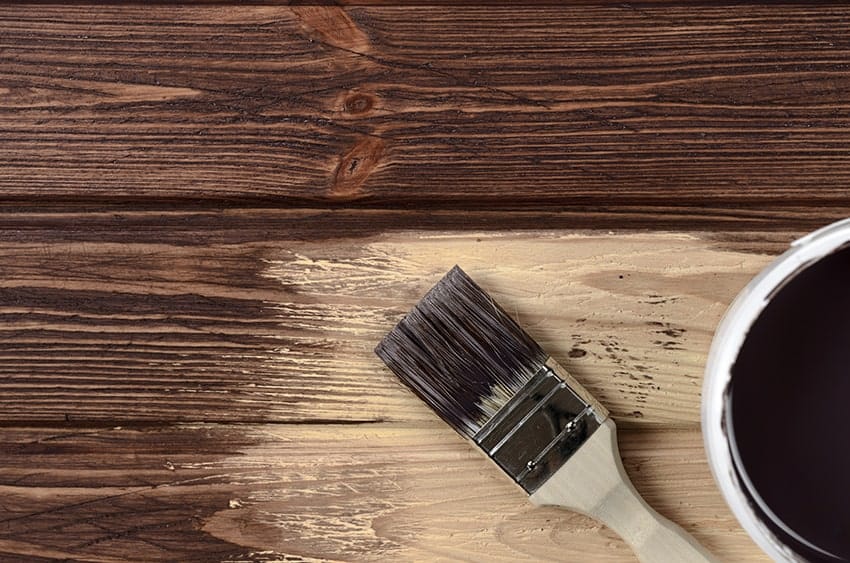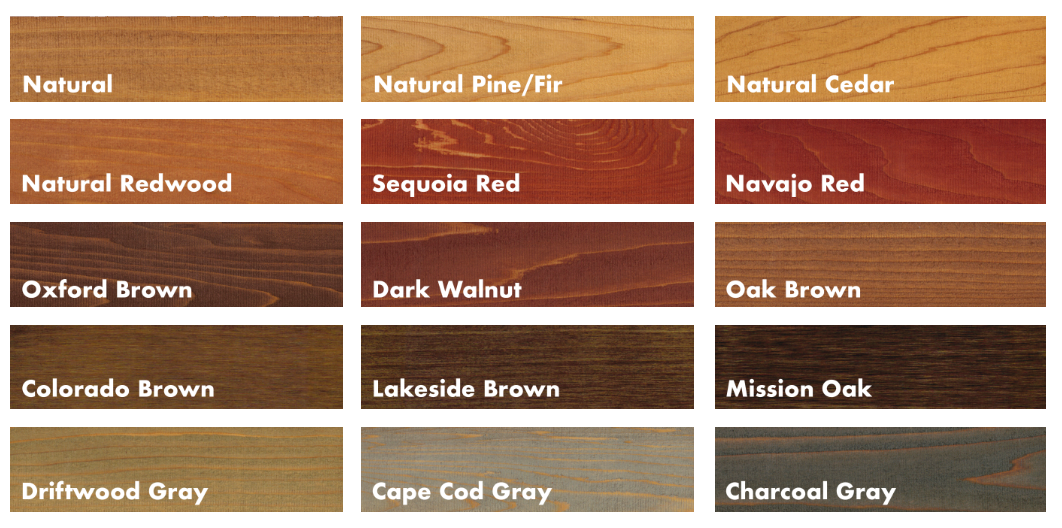A fresh coat of stain can transform your deck’s look, and it helps protect the wood from the weathering, adding more years to your outdoor living. Even the best staining jobs require regular refinishing every two or three years. It is best to do deck restoration at the earliest signs of wear. In this blog, we focused on choosing the right stain for your deck and what key steps are essential in deck staining and restoration.
What is the process of deck staining?

To better choose the right stain for your deck, it is best to know first what the staining process consists of, as it allows you to understand better what you need to consider and what you will work with.
First, you start by cleaning your deck. Use a belt sander for sanding the deck lightly, working in the direction of the wood grain. Then, prepare the deck cleaner according to the manufacturer’s recommendations. Apply it, then scrub with a stiff brush. Make sure to scrub in the direction of the wood grain to clean the surface thoroughly. Use then a power washer to rinse off the cleaner. After the wood cleaner, apply a wood brightener to open up the wood’s surface to improve penetration and restore the appearance of old and weathered wood. After this step, give a final rinse with a power wash to ensure your surface is clean before moving forward.
Second, it’s time to apply the stain. Stain small, 3-foot-square sections at a time, then pause with the roller and brush the surface with your large paintbrush. This step eliminates drips and puddles and creates a more natural brushstroke. Make sure to apply the stain along the wood grain.
For best results, apply stain when the temperatures are between 50°F and 90°F, and avoid staining in direct sunlight if possible. Sun dries out stain quickly and can create uneven color and brush marks.
Third, finish applying the stain in hard-to-reach areas using a smaller paintbrush to stain deck railings, stairs, skirt boards, etc. Make sure you use the same brushstroke technique for a cohesive layer and coating. Let the stain dry for 48 hours before walking on it.
Most stains already have a sealant mixed in, so you don’t have to worry about the extra step of applying another coat to seal your stain color. Click here to learn more about deck sealing services.
Types of wood

The wood used for your deck can help identify the best stain for the job. Various kinds of wood will look better with specific stains, each offering different protection.
Many different types of wood can be used for exterior applications. Pressure-treated pine, cedar, and hardwoods are some of the most common types of decks and other outdoor wood structures. A quality wood and deck stain can provide years of protection for all wood types. More porous wood will absorb more stain causing it to be darker. Newer wood or some types of hardwoods may be smoother and denser and will not absorb as much stain, which results in a lighter-colored finish.
Types of wood stain

With each stain, different types of wood will show their structure differently. If your decking is built with softer wood like pine or cedar, the wood grain showing through is less of a factor than the protection it needs from the elements. A solid or semi-solid stain works better for these woods as it protects against deteriorating the wood structure. These stains offer better weather protection while being slightly less transparent. As for a more expensive kind of lumber, you want its grain and structure details to stand out. In this case, it’s best to use a more translucent or semi-transparent stain not to cover up the beautiful details.
Today, many households opt for composite decking. These decks are incredibly durable and low maintenance. However, occasional painting or staining will help protect the deck and ensure a longer lifespan. A solid stain is the best option for composite decks, as it offers beautiful color and protection from the elements.
Understanding opacity is crucial when choosing the right wood deck stain for your decking because it has to suit the needs of wood protection. Knowing what structure your decking is can help identify how opaque of a stain you should select.
Matching and coordinating colors

The next part of this process is matching the color selected. Your house already has a prevalent color, so you can choose to match the color of your deck to one of three elements of your house: the main color, the trim color, or a different coordinating color.
- The main color – you can easily blend your deck by staining it the same color as your overall house shade. It will complement the house giving it a unified appearance and representing a much more put-together look.
- The trim color – staining your deck the same as the house’s trim color will portray a classic look as it underlines the tone of your home.
- The coordinating color – if you completely dislike the idea of matching your decking the same color as your house, you can opt for a coordinating color. That way, you create an individual representation of your outdoor living area while still showing that it is a part of your property.
Test before deck staining

You want to be sure you choose the perfect stain color for your deck. And what other way than testing your stain before beginning your big project is there to ensure you make the right decision? We recommend you get some samples to try out at home by staining some leftover wood pieces; if you don’t have any, you can stain an underside area on your deck. That way, you can get an idea of the potential look and gauge the overall color scheme of your house.
If you aren’t sure what stain color fits your deck best or need any advice or help in choosing the perfect tone, you can contact your local professional deck staining service, and they’ll inform you and take care of anything you need.

